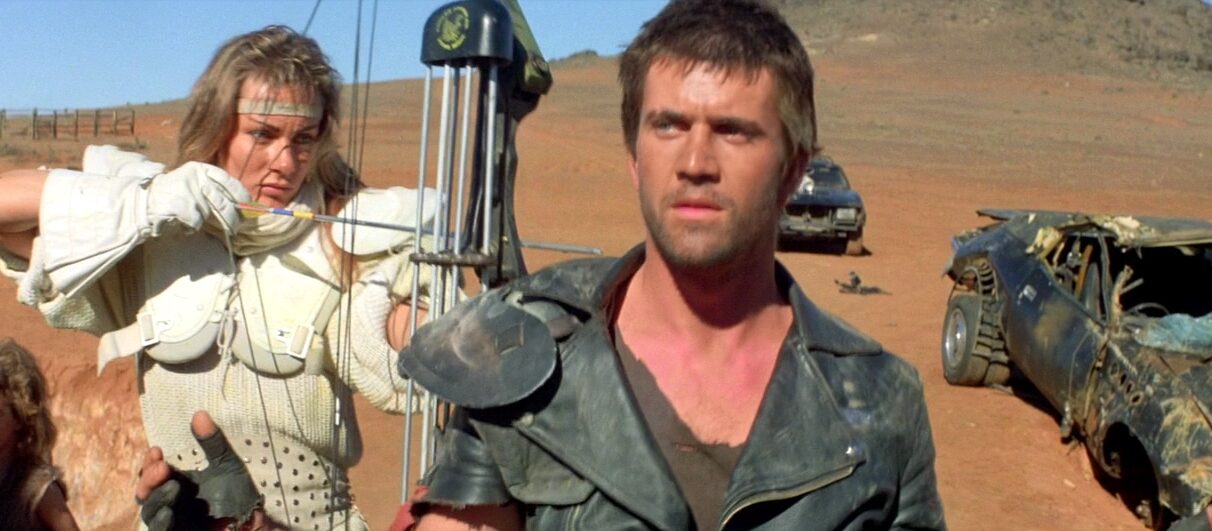
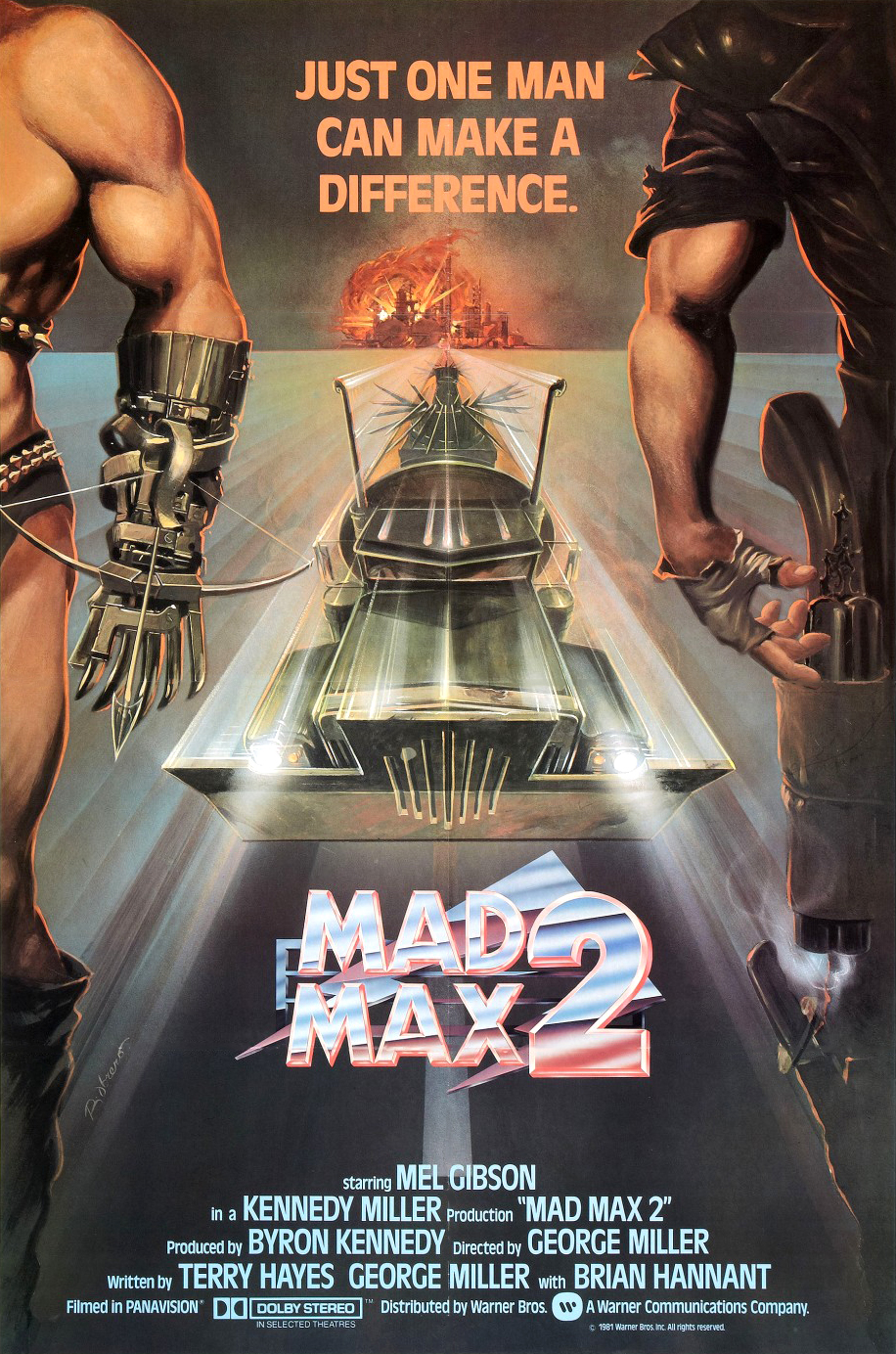
“My life fades. The vision dims. All that remains are memories. I remember a time of chaos… ruined dreams… this wasted land.”
Transposing Max Rockatansky (Mel Gibson) from the borderline-dystopia of the original Mad Max to a savage post-collapse milieu, George Miller’s Mad Max 2 (released as The Road Warrior stateside due to the relative obscurity of the first film) builds itself around a simple premise: a community of pacifists, led by the idealistic Pappagallo (Mike Preston) and congregated around a functioning oil refinery, must fend off and then escape from a band of ruthless marauders led by the musclebound Lord Humungus (Kjell Nilsson). They manage to do so in a tantalizing fashion with the help of lone drifter Max and The Gyro Captain (Bruce Spence).
The film has received an outsized quantity of analyses examining it through various political, sociological, and cultural lenses. These analyses consider the implications of the wastelanders’ penchant for garbing themselves in black leather, piecemeal metallic armor, and other flamboyant attire; their unceasing scavenging for and scuffles over fuel, food, and ammunition; their fetishization of vestigial cultural artifacts (namely, cars); the rampant homoeroticism; the absence of a central government; and so on and so forth. Adrian Martin outlines several of these critiques in his review of the film and expands on them in a book-length essay on the subject (The Mad Max Movies).
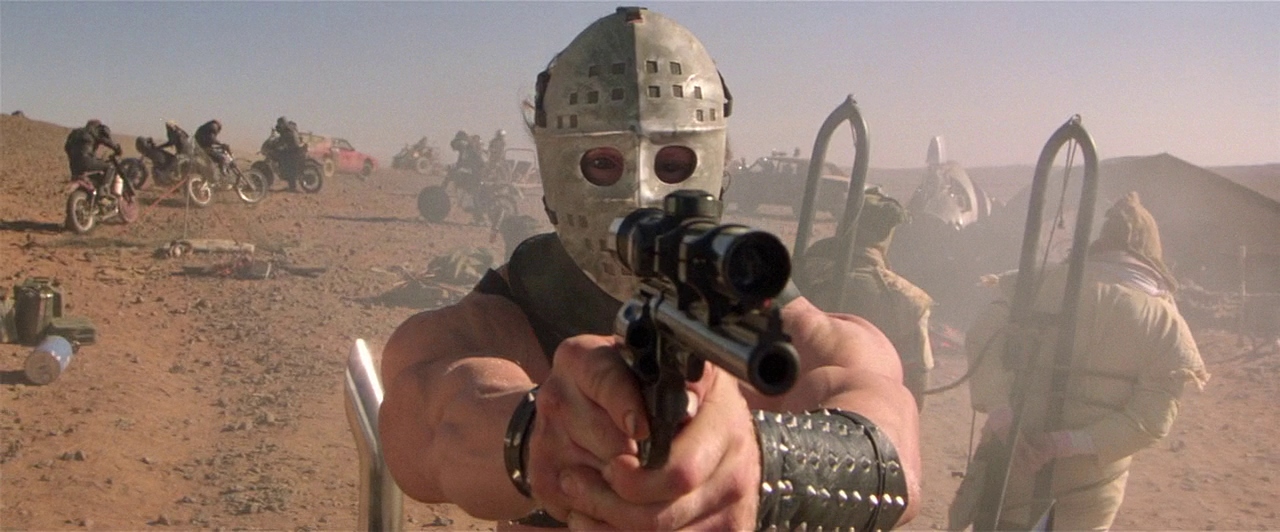
However, the reason that Mad Max 2 has drawn such attention is not because it has an extremely deep text but because it is a superlative high concept action movie. As Martin observes, “its themes are simple, even banal, mere pretexts for action.” Its appeal lies not in its punk aesthetics, its post-apocalyptic setting, its archetypal scenario and motifs, or its myth-making tendencies, or what can be drawn out of these things, but in the way that all of these considerable qualities are subjugated to the force of its cinematic kineticism—which is a byproduct of form and style rather than substance.
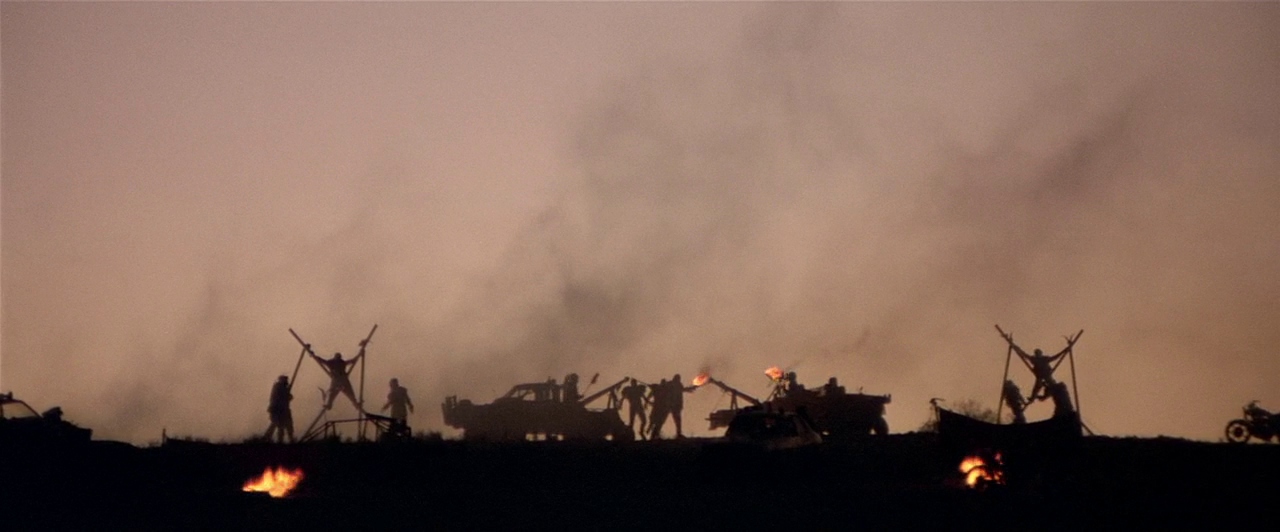
A Mandela effect hangs over Mad Max 2, suggesting it is predominantly balls-to-the-wall action. It’s not. In fact, it probably features less action than the scrappy original film. What viewers are perceiving is an exhilarating narrative economy that’s usually not achieved in genre films like this one, which often feel the need to call attention to each and every clever detail they’ve implemented. Certainly the expansive chase sequence in the finale—a wild tapestry of masterfully orchestrated moving pieces and stunt work—is a show-stopper on sheer scale alone, but consider how much more compelling it is with the pimped out rust buckets, the dirt bikes, the leather flying caps and hockey masks, the colorful mohawks and arrayed feathers, the scoped pistols, the bows and arrows, the gyrocopter. Other canny inclusions, like the scarcity of bullets or the nonchalant chowing on canned dog food or the unexplained rules of social interaction, heighten the overriding sense of urgency.
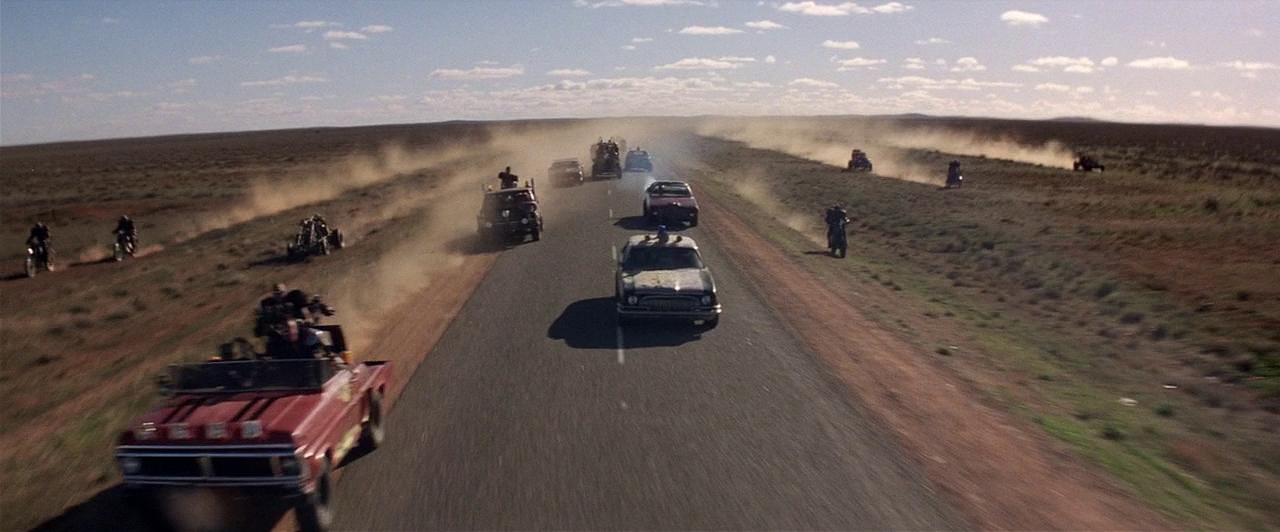
And of course after his first go-around on the cheap, Miller’s confidence in his style is off the charts. He uses every bit of the frame and every cut to bolster the film’s extraordinary momentum, eventually reaching a steady state of pure cinema, in the Hitchcockian sense. Though it kicked off a trend of post-apocalyptic rip-offs, parodies, and homages, in terms of the craft of cinematic storytelling, Mad Max 2 bears mentioning alongside other exceptionally well made high concept films such as Jaws, Halloween, and The Matrix.